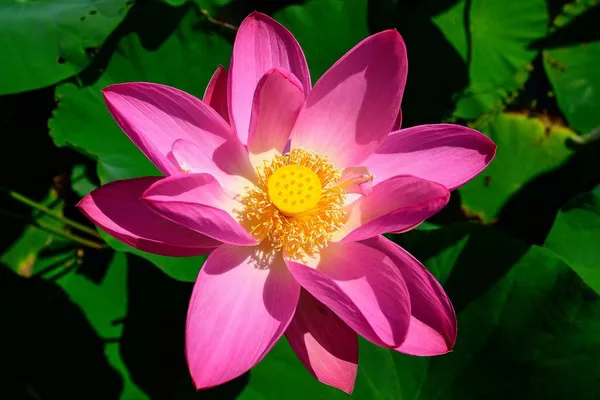Flowers have captivated humanity throughout history, serving as symbols that convey emotions, ideas, and concepts. They possess a remarkable ability to express sentiments and themes through their colors, shapes, and fragrances. Among the diverse meanings ascribed to flowers, one of the most profound is their representation of growth.
The Symbolic Power of Flowers
Flowers, in their diverse array of forms and colors, have long been used to communicate complex and profound sentiments. These natural wonders symbolize a variety of emotions and life stages, and growth is a theme that resonates deeply with people across cultures and eras. Whether through art, literature, or the language of flowers (floriography), blooms have been employed as vehicles to represent personal and collective growth and transformation.
Cultural Significance
The concept of flowers symbolizing growth is woven into the fabric of numerous cultures worldwide. In Chinese culture, the lotus flower is a symbol of purity and enlightenment, representing the journey of spiritual and personal growth. Similarly, in Hinduism, the lotus holds a sacred place, symbolizing divine beauty, wealth, and spiritual growth. The growth and renewal of the lotus as it rises from murky waters to bloom exemplify the transformative power of growth.
Historical Context
Throughout history, flowers have been used to convey messages of growth and progress. In the Victorian era, floriography, or the language of flowers, reached its peak in popularity. People exchanged carefully chosen bouquets to express their feelings and intentions. Flowers like the daffodil, with its association to renewal and personal growth, were significant in conveying a message of hope for the future.
The Role of Growth in Human Life
Growth, as a concept, is central to the human experience. It represents progression, evolution, and the fulfillment of potential. We often seek to find ways to express our personal growth and transformation, and flowers provide a beautiful and tangible means of doing so. They serve as reminders of the growth journey we all embark upon in our lives.
Flowers that Represent Growth
While many flowers may symbolize growth in various contexts, some hold a more prominent place in the narrative of personal development and transformation. Let’s explore a selection of flowers that are particularly associated with the theme of growth.
The Lotus Flower: As mentioned earlier, the lotus flower is an iconic symbol of spiritual and personal growth in several cultures. Its emergence from the muddy waters to bloom in pristine beauty mirrors the journey of an individual’s growth through life’s challenges and obstacles.
The Daffodil: Daffodils are renowned for their vibrant yellow petals and their early spring appearance. They symbolize renewal, new beginnings, and personal growth. Their cheerful and optimistic appearance reflects the idea of embracing change and thriving in new conditions.
The Sunflower: The sunflower’s distinctive characteristic is its tendency to follow the sun, a behavior known as heliotropism. This trait is often seen as a metaphor for personal growth, as individuals seek light, knowledge, and self-improvement throughout their lives.
The Bamboo: While not a typical flower, bamboo is a potent symbol of growth. Its rapid growth and strength convey resilience, adaptability, and the ability to overcome adversity. It serves as a reminder that personal growth may come through facing challenges.
The Iris: The iris flower is associated with messages of hope, courage, and personal growth. Its intricate, vibrant petals mirror the intricate journey of life, with each layer representing new experiences and phases of personal development.
The Morning Glory: Morning glories are known for their vibrant, trumpet-shaped flowers that bloom in the morning, symbolizing a fresh start and embracing the beauty of each day. They represent the ongoing journey of personal growth.
The Language of Flowers
Floriography, the language of flowers, is a fascinating system where specific flowers convey unique messages. It was especially popular during the Victorian era, a time when individuals could express their feelings discreetly and symbolically through carefully chosen bouquets. The concept of using flowers as a means of communication continues to be relevant today, allowing us to convey messages of growth and transformation through floral arrangements.
When creating a bouquet that symbolizes growth, one can combine various flowers that represent different aspects of the growth journey. For instance, a combination of daffodils for renewal, sunflowers for seeking the light of knowledge, and lotus flowers for spiritual growth can create a bouquet that profoundly embodies the theme of growth and transformation.
Flowers in Celebrating Milestones
The role of flowers in celebrating milestones is another aspect of their symbolism in representing growth. Throughout life, people commemorate achievements and transitions with the gift of flowers. Whether it’s a graduation, a new job, a wedding, or the birth of a child, flowers are an integral part of these joyous occasions.
For example, a graduation ceremony is a celebration of academic growth and achievement. The tradition of presenting graduates with bouquets of flowers represents the growth in knowledge and personal development they have experienced during their academic journey.
Flowers also play a significant role in weddings, symbolizing the growth of love, commitment, and the beginning of a new phase in a couple’s life. The bridal bouquet, in particular, holds deep meaning, representing the growth of love, trust, and the future journey of the newlyweds.
Conclusion
Flowers, with their vibrant colors, exquisite forms, and captivating fragrances, are more than just ornamental additions to our lives. They serve as potent symbols that convey the profound concept of growth. Whether in the context of personal development, cultural symbolism, or historical significance, flowers are a timeless representation of the journey of transformation and progress that defines the human experience. Embracing this symbolism, we can use flowers to celebrate our growth, convey messages of hope and renewal, and express our aspirations for a brighter and more flourishing future. In doing so, we acknowledge the enduring power of nature to inspire and guide us on the path of growth and self-discovery.


